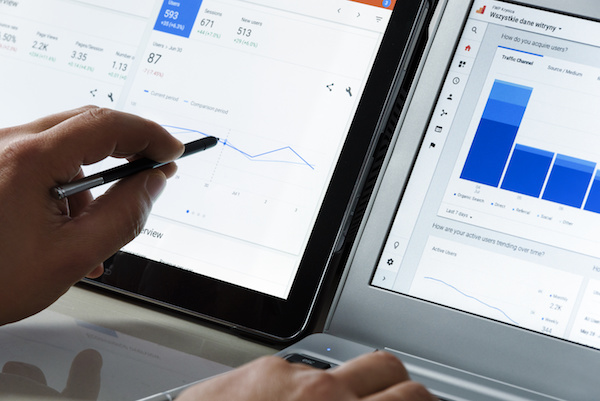
Many small to large-scale e-commerce businesses rely on Google Analytics to understand customer preferences and assist merchants in the creation of better consumer experiences. However, since every dollar spent on marketing is crucial to the success of an online business, insights from digital analytics tools have become more essential than ever, as we see a major shift in industries moving to web-based platforms. So, to help you to better understand how to digitally market to your target audience long term, a more intelligent version of Google Analytics has been released which will build on the foundations of the App + Web properties.
Introduction to Google Analytics
The Google Analytics platform is a web-based analytics service that tracks and reports website traffic, conversions, and behaviours. Google first launched the service in November 2005 after acquiring Urchin, an early day web statistics program that analyzed service log file content and displayed the traffic and user information in one reporting stream. As the internet has evolved, the demand for such metrics that track user activity has increased, which has led to the latest iteration of Google Analytics, Version 4, enabling the blend of online and offline activities.
Getting acquainted with Google Analytics 4?
Version 4 is the latest rendition of Google Analytics and while it will not immediately enhance the reporting capabilities of most online merchants, it will help e-commerce businesses that:
- Have an app
- Have a software-as-a-service business model
- Are interested in advanced remarketing
Even if your e-commerce business ticks none of the boxes offered by the current version, we recommend that all merchants create an account as part of their Google Analytics strategy to benefit from updated reports and future advanced features.
How to create a Version 4 property
- First, you will need to create a Google Analytics account and then log in, click the Admin icon, and then follow up by selecting create property.
- Next, click the option entitled, “Apps and web” as the property type.
- Then you will need to name the property and complete the settings on the page. Once that is done, click “Create”.
- The next page will require you to select your data stream. For most online merchants, it will be “Web”.
- Next, provide the “Website URL”, name the stream, and choose which interactions to track automatically. Select all options, even if you presently do not use some of those activities (ex. videos or file downloads). Then, click “Create Stream”.
- The next allows you to add a new tag or use an existing one. If you have already tagged your site, click “Use existing on-page tag”, otherwise, follow the instructions to add a new one.
All of the above steps will enable your general tracking, which is a great way to utilize Google Analytics within your digital marketing strategy.
There are smarter insights to improve your return on investment (ROI)
Version 4 of Google Analytics can automatically alert you to significant trends in your data, such as products that may be rising in demand due to changing customers’ needs. This new feature will help you to anticipate the future actions of your target consumer, churning a more effective strategy to retain customers and keep within your marketing budget. The latest version has also added new predictive metrics, allowing you to create an audience to reach your higher-value customers and run analyses to better understand why some customers likely spend more than others, allowing you to take action to improve these results.
The strategy behind Google Analytics includes reaching your customers with more relevant, helpful experiences in the areas where they engage best with your business. This new version can also measure app and web interactions together, allowing you to see conversions from Google alongside non-Google paid channels, as well as organic channels like Google Search, social, and email to help you better understand the combined impact of all your marketing efforts. Professional digital marketing companies like us use this to assist in improvements from acquisition to conversion and retention, which is critical with the needs of consumers rapidly changing.
What are your thoughts on the Google Analytics strategy of Version 4? Drop your comments below to start a conversation.
Alex Wilks has been working as a copywriter and digital marketing strategist since 2018, with added specialties in social media and email marketing. With a Bachelor’s Degree in Journalism and Communication, she is a natural content writer with the ability to connect well with her target audience.
